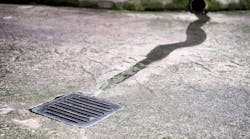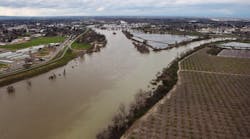AUSTIN, TX, Oct. 30, 2012 – A ribbon cutting ceremony was held Tuesday to celebrate the substantial completion of the City of Austin’s Downtown Wastewater Tunnel (DTT) project. The project improved wastewater collection for all of central Austin and the downtown area, and it allowed two lift stations to be taken out of service.
In 2001, the City of Austin’s Water Utility awarded the engineering firm Parsons a contract for the Downtown Wastewater Master Plan that progressed to a contract to perform design and construction support services for the tunnel. Parsons completed the design for the DTT project in 2009 -- all the design phases were completed on time and within budget -- and has been providing the city with underground inspection and construction engineering services for the remainder of this critical project.
“From master planning, through design and to construction completion, we are proud to have worked with the City of Austin’s Water Utility on this important infrastructure project,” said Virginia Grebbien, Parsons Group President. “Parsons applied innovative solutions to address subterranean, surface level, and urban issues in the design and throughout the construction phase of the project, including the use of polymer concrete for constructing the tunnel drop and access manholes and vortex hydraulic drop structures to address odor and corrosion issues.”
The DTT project is part of the city’s greater plan to improve Austin’s wastewater system and support sustainability. By reducing current flows in the existing interceptors, the tunnel will make wastewater collection capacity available for future downtown development and allows for greater building and population density.
The DTT was constructed with tunnel-boring machines and includes 70-ft-deep access shafts (30-ft diameter) that were converted to tunnel access manholes. The tunnel is 20,000 ft long (3.9 miles), and it intercepts wastewater flows from main downtown interceptors at five locations with provisions for a sixth future location. The tunnel crosses under Lady Bird Lake three times and varies from 55 to 85 ft below ground or lake surface.


